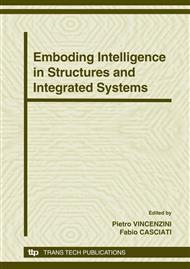p.247
p.253
p.259
p.265
p.271
p.277
p.287
p.297
p.303
Experimental Assessment of Structural Control Devices Used to Protect Civil Buildings
Abstract:
This paper presents the latest developments realized at the European Laboratory for Structural Assessment (ELSA) of the Joint Research Centre (JRC) to extend the 'on-line testing method with substructuring' to the experimental verification of civil buildings protected by semiactive devices. Recent works have indicated that semiactive control systems can achieve significantly better results than passive control systems and demonstrate significant potential for controlling structural responses to a wide variety of dynamic loading conditions. These factors explain the considerable interest in the practical implementation of these systems for protection of civil infrastructures against earthquake and wind loading or, more generally, for vibration mitigation. Commonly, cyclic tests are initially performed to characterize the semiactive device behavior but a complete validation requires the simulation of realistic dynamic loads including the effects of the protected structure and the evaluation in real world of the performance and robustness of different control laws and related instrumentation before the final hardware implementation. Experimental verifications satisfying such requirements can be achieved by using the novel extension of the on-line testing procedure presented here.
Info:
Periodical:
Pages:
271-276
Citation:
Online since:
September 2008
Authors:
Keywords:
Price:
Сopyright:
© 2008 Trans Tech Publications Ltd. All Rights Reserved
Share:
Citation:


